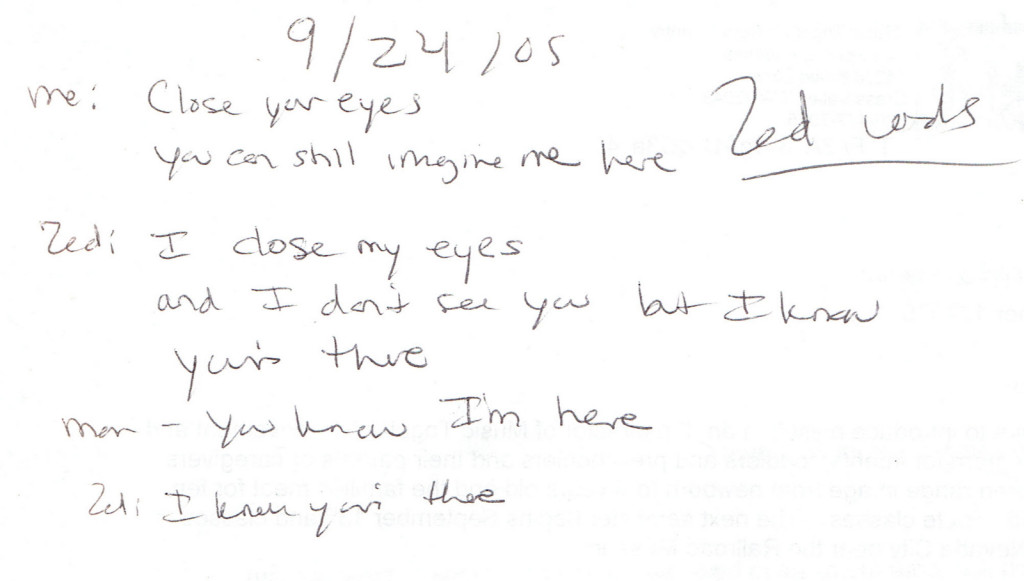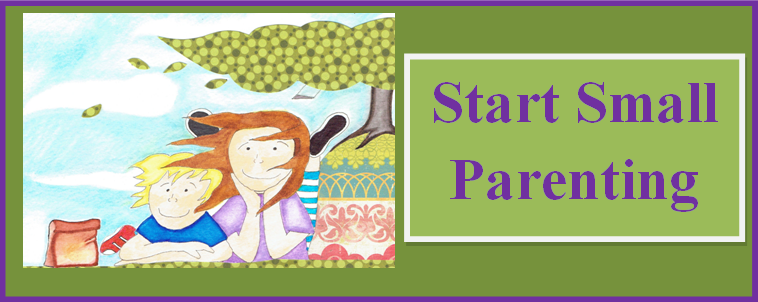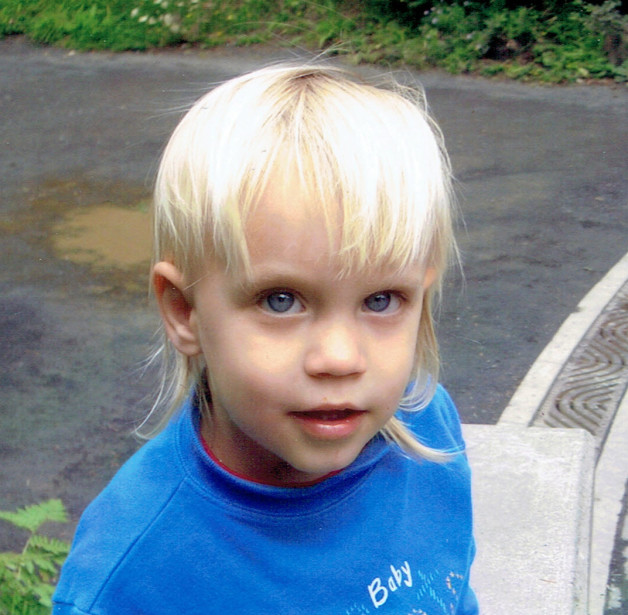My son was 2 when we began to help him transition into his own big boy bed. At first he used our assistance to fall asleep – lullabies, holding hands, or gentle back rubs. It then changed to where he just needed us in the room.
Today, I found this scrap of paper and it reminded me of how sweet the words were we exchanged:
 Me: Close your eyes. You can still imagine me here.
Me: Close your eyes. You can still imagine me here.
Son: I close my eyes and don’t see you but I know you’re there.
Me: You know I’m here.
Son: I know you’re there.
The Magic of Three Sentences
One of children’s greatest needs is to feel safe. These three words can help create that safety. Repeat them when you tuck your child in or are leaving the room:
You are Safe. You are Loved. You are Sleepy.
A Safety Bubble
Once in bed, our Go-to-Sleep ritual consisted of growing a safe bubble around my son (drawn in the air with my arms all around his body) and he would tell what material it consisted of that night (gold, iron, titanium, sparkles a nest of leaves, etc.) And nothing could go in and out but him and the rest of the family (including our dog, of course).
Special Friend
Encourage your child to have a special stuffy or blanket. Parents sleep together. The child might be feeling lonely in comparison to what he or she sees modeled.
Calm Their Brain
Repetitive Tasks: If your child is anxious or chatty and energized before bed, you can teach them to direct their brain to repetitive tasks that will tire the brain. Give the child something mundane to think about. You can help a young child learn this by talking them through the steps of an event.
My son would review the elements of soccer practice that day. He might also review the path he rode on his bike, imagining the houses and landmarks, major uphills, or any other details. The more details the better.
Focus on a Body Part: Another tip is to help them focus on a smaller body part, especially one that is far from the head, like a baby toe. Encourage them to feel the toe, and only think about the toe. The imagination might need practice, so remind your child to return to the toe.
Sing a Lullaby: The repetition of a favorite song (even if it’s not a lullaby – ANY song can be slowed down) sung in YOUR voice is a great ritual to instill early on. The quality doesn’t matter here. It’s the effort that counts. Humming works well, too.
Lessen Excitement Inducers through Diet
Kelly Dorfman, M.S., L.N.D. and co-founder of the online resource Developmental Delay Resource, says that it s best to avoid common dietary excitement inducers if possible:
1) Aspartame – amino acid building blocks that stimulate the excitatory neurotransmitters through amino acid building blocks
2) Sugar – instant energy for children.
3) MSG – found in many foods (like soup bases, spices, baby food and infant formula(!), salad dressings, croutons, soy “meat” products, protein powder) and can agitate arousal receptors
4) Artificial colors – affect the liver’s detoxification system
Increase Calming Supplements
1) Essential Fats – high omega 3 and 6 (flaxseed, salmon, oil supplement) are the base of the brain structure. Deficiency in these can induce hyperactive behavior.
2) Magnesium – helps relax muscles and inhibits the neurotransmitter acetylcholine (an excitatory). (A child over the age of two should have a dose of between 100 to 300 mg.)
3) GABA (short for gamma-amino butyric acid) is a calming neurotransmitter. It can help to decrease muscle tension and, in larger doses, induce drowsiness. (Between 300 – 600 mg but up to 1000 mg can be used in children over 13.)
4) Vitamin B6 – necessary to break down and use GABA and magnesium.
Share Your Intention
It’s respectful to share with your child your expectation. During the day you might say, “Tonight, you will sleep in your own bed. I’ll help you fall asleep. It’s your job to sleep in your bed.” You can repeat the instruction at dinner, and then right before bed.
At Least 20 Minutes
The average time it takes to fall asleep is 20 minutes. Be patient with your child. Enjoy those special moments before sleep arrives.
Your methods can help others. What do you do in your house that’s working for you?



Thanks, Mariella, for this super helpful comment. Yes, emotional security comes from knowing the parent is taking care of the environment – and helping to make the child’s world as safe as possible. That includes responding and attempting to discern the child’s needs. I love how you explained that we need the dark in order to see the moon and stars. Beautiful! Jesse’s got a great mom!
Such a helpful article. I love the last idea about patience. Isn’t that the one ingredient we all need to work on the most? We adults want everything to happen right away and we step back more often I think we give our children more room to grow.
Maria